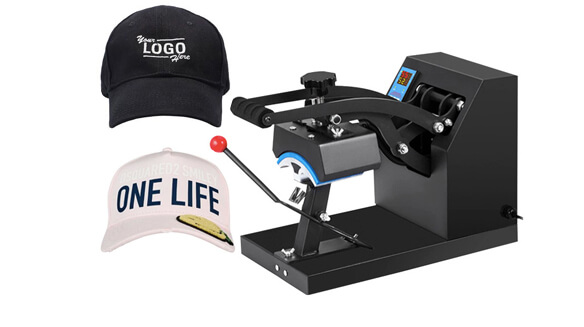How Long Does It Take To Print A Shirt: A Comprehensive Guide
Curious about how long it takes to print a custom shirt? You’re in good company. Many people ponder this question when they’re designing promotional items, organizing events, or simply aiming to personalize their wardrobe.
In this guide, we’ll dive into the key elements that affect the speed of shirt printing. This way, you’ll gain a clear understanding, helping you set practical timelines for your projects or personal needs.
Why Timeframe Matters
Knowing the timeframe for printing a shirt is important when planning or estimating completion times.
Importance of knowing how long it takes to print a shirt for planning purposes
Wondering how long shirt printing takes? The answer can vary greatly, depending on the technique used and the complexity of the design. Times can range from just a few minutes to up to an hour. Understanding this timeframe is essential for a number of reasons.
Firstly, delivering on time is crucial for earning positive reviews and securing repeat customers. Secondly, a precise time estimate aids in planning your production schedule, especially for large orders. This, in turn, helps you calculate labor costs accurately.
But it’s not just about speed. Rushing the process can compromise quality, leading to issues like misprints. Also, a firm grasp on how long each method takes lets you allocate resources like labor and machinery more effectively. Lastly, efficient production timing is key for effective inventory management, ensuring you neither run out of supplies nor waste money on overstocking.
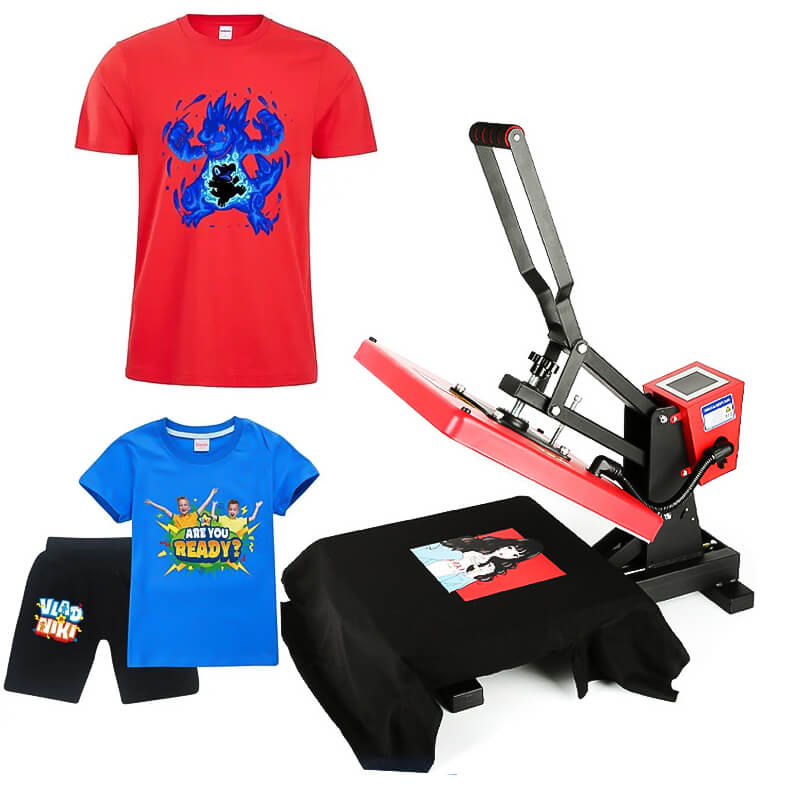
Normal Printing Time
- Screen Printing: This is generally a longer process, especially for multi-color designs. The setup itself can take a couple of hours, but the printing of each shirt may only take a few minutes. However, the drying and curing process can add additional time. If you’re curious about creating your own screen print designs, discover How Do I Make My Own Screen Print Transfers.
- Heat Press: This can be much quicker, especially for simple designs. It could take just a few minutes to press the design onto the shirt. If you’re wondering about the kind of t-shirts suitable for this method, find out What Is The Best T-shirts For Heat Press in our dedicated guide.To understand the pros and cons of these two popular methods, read our in-depth comparison guide on Screen Printing Vs Heat Press.
- Direct-to-Garment (DTG): This method can take anywhere from a couple of minutes to 10 minutes per shirt, depending on the complexity and size of the design.
- Sublimation: Similar to heat press in terms of time, but can vary depending on the complexity.
Other Factors
- Design Complexity: More complex designs take longer to print.
- Number of Colors: More colors generally mean more time, especially in methods like screen printing.
- Preparation Time: Includes time to prepare the design, set up the machine, and possibly even time to pre-treat the shirt.
- Post-Processing: Some methods require a drying or curing time after printing.
Bulk vs. Single
- In bulk printing, the per-shirt time can be considerably less, as many steps are common across all shirts.
Given all these factors, it’s difficult to give an exact time without specifics. However, here’s a rough estimate:
- Fastest: Heat Press for a simple, one-color design: 2-5 minutes
- Most Common (Screen Printing): Setup: A couple of hours, but then maybe 3-5 minutes per shirt plus drying time
Factors Influencing the Speed of Printing a Shirt
Sunning factors like the type of item, colors, and size of design are key players in the speed it takes to print a shirt. Learn more about this process and read on
Type of item being printed
When printing shirts, the item’s characteristics significantly influence the time needed for completion. For instance, screen printing is a popular choice for t-shirts because it’s fast and efficient. In fact, you can print up to 100 shirts in just an hour using this method.
On the other hand, more intricate items like hoodies and tote bags demand a different approach. These items often require a more meticulous process that takes a bit longer but offers superior print quality and durability. Furthermore, such garments typically need special jigs for precise placement, adding extra time to the process.
Material attributes also play a crucial role in determining the printing speed. Factors such as size, material type, texture, weight, and even color can affect the timeline. Specifically, lighter materials usually take more time than darker ones because they require a higher ink saturation to achieve vibrant colors. Therefore, if you’re planning to place a bulk order or are working with tight deadlines, these are essential factors to consider.
Size of design and screen
When it comes to T-shirt printing, the design’s dimensions and the screen size used are critical for achieving the best outcome. A well-proportioned image size ensures that your design aligns perfectly when printed on multiple items.
The balance between width and height, along with your target design size, influences how sharp your final print will appear on the fabric. For instance, a standard adult shirt design often measures around 11″ x 11″.
However, if you plan to go larger, be cautious. Enlarging an image can lead to a noticeable loss in quality, even if it doesn’t appear that way from a distance.
It’s important to remember that digital devices measure artworks in pixels. As a result, an image may look sharper on screen than in its printed form. To counter this, setting the correct DPI (dots per inch) is crucial for maintaining both sharpness and color accuracy in your final print.
Lastly, don’t overlook the screen’s role in the printing process. It impacts not just the image resolution but also the maximum size your artwork can be. You need to ensure your design fits within the screen’s physical boundaries, without bleeding off the edges or compromising the spacing between colors. Therefore, understanding these nuances can significantly enhance the quality of your printed T-shirts.
Number of colors per design
When printing shirts, the color count in your design is a significant factor that affects both speed and efficiency. In screen printing, each color necessitates its own screen, thereby increasing time, cost, and effort. This is especially troublesome if you’re working on short runs of shirts, as the screen-prepping stage can cause additional delays.
Contrastingly, methods like Direct-to-Garment (DTG) and heat transfers are more lenient with the color count. These are single-step processes that handle full-color designs with ease.
However, don’t forget that these methods come with their own limitations, often depending on the machine you’re using. So, when choosing a shirt type, keeping the number of colors in your design in mind is crucial. This ensures you’ll minimize delays and achieve the quality you’re aiming for.
Use of a jig or manual registration
In shirt printing, using a jig or opting for manual registration is crucial for a smooth process. A jig securely holds the screen in place, ensuring precise alignment for optimal ink transfer to the garment below.
With a jig in place, manual registration becomes unnecessary. This tool allows for the exact positioning of the design on each T-shirt, leading to consistent results. This not only saves time but also minimizes effort compared to registering each print job manually.
Utilizing a jig enhances both speed and accuracy, particularly when you’re printing large quantities of shirts. Additionally, it minimizes errors stemming from inconsistency, guaranteeing uniform prints whether you’re making just one shirt or a batch of 100.
Layout of the work area
Organizing your workspace and ensuring ample supplies are on hand can greatly improve both time efficiency and overall productivity in shirt printing. For example, positioning equipment for easy movement between stations and providing unhindered access to essential tools like screens or ink cups can be a game-changer.
By keeping tools in close proximity, you eliminate the need to move them around frequently as workers shift from one task to another. Similarly, having materials like shirts or transfer papers easily accessible adds an extra layer of convenience during the production stages.
Paying attention to these details not only boosts workforce productivity but can also cut down on unnecessary costs. Specifically, a well-organized work area can help reduce delays stemming from inefficient setups, making the entire process more cost-effective.
Common Methods of Shirt Printing and Their Timeframes
Understanding the different printing methods and associated time frames will help you plan for successful shirt printing projects!
Screen printing
Screen printing is a widely used, budget-friendly technique for imprinting ink onto various materials. For those curious about the longevity of this method, read our guide on Does Screen Printing Last. Originating from China’s Song Dynasty. This method calls for a high level of skill and precision to produce top-notch prints.
The process works by pushing ink through a mesh screen onto the target material. If you’re not familiar with this technique, you can learn more about What Is A Screen Print Transfer, such as fabric, ceramic tiles, or paper products. Every color in the design demands a separate screen. These screens are aligned precisely using a light table or a jig. Consequently, the more colors you have, the longer it takes to set up each screen.
You can also use pre-made stencils for direct application onto fabric, but keep in mind that these too require frames, incurring additional costs.
After setup, each color must undergo an initial curing period of around 5 minutes. Extending this period could compromise ink adherence on some fabrics, thereby restricting your design options. So, understanding the intricacies of screen printing can help you make informed decisions and achieve the best possible results.
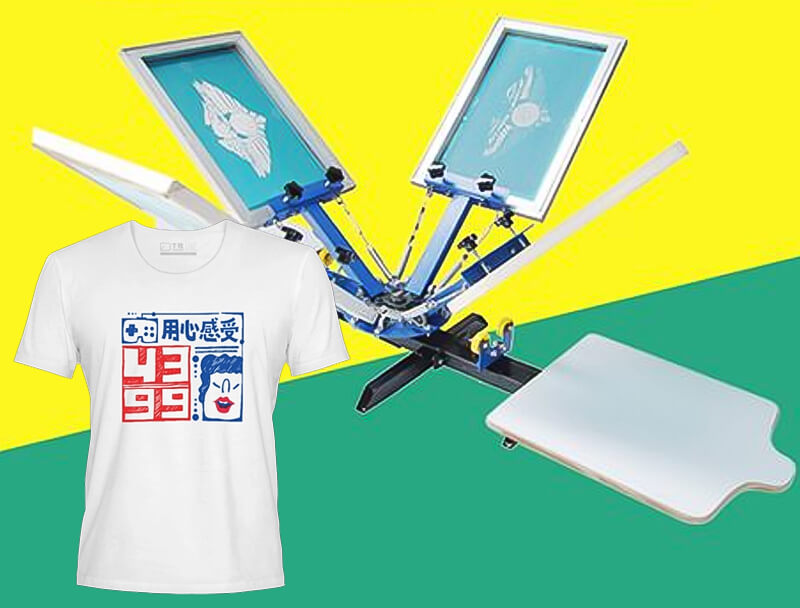
Direct-to-garment (DTG)
Direct-to-garment (DTG) printing is ideal for small orders and intricate, full-color designs. This method delivers high-quality, vibrant prints on fabric while requiring minimal setup.
With DTG, the time needed to print a single garment is about three minutes. This speed allows for the quick production of small batches. What’s more, this technique ensures long-lasting, vivid prints that withstand even the toughest outdoor conditions without fading or cracking. Plus, DTG offers great scalability, making it easy to ramp up production for larger orders when needed.
In summary, DTG printing is a quick and dependable method for bringing your creative apparel designs to life.
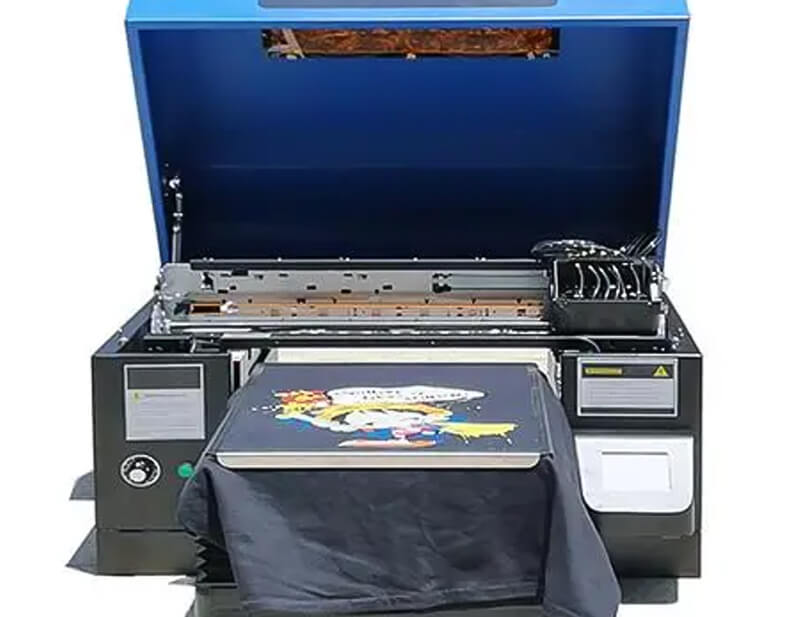
Heat transfer
Heat transfer printing is a favored choice for T-shirt customization, thanks to its high-resolution output and generally faster turnaround compared to screen printing. If you’re interested in making your own transfers, learn How To Make Transfers For T-Shirts.
This method uses an external heat source, like a heat press, to transfer designs. Various mediums like inkjet transfer paper, dye sublimation, digital appliqué, or vinyl transfers can be used.
With heat and pressure, the pigment from these transfers is securely bonded to fabrics, resulting in durable prints that won’t easily crack or peel. Ever wondered Does Heat Transfer Vinyl Last? You’ll be pleased to know it does when done correctly. The time required for each design can vary based on factors such as size and color tones, but generally, you can expect the process to take anywhere from 14 to 60 seconds per item.
Consider this: with a 4×4 inch full-color design, you could print on 10 T-shirts every 30 minutes. Given this speed, it’s easy to see why many opt for heat transfer printing over screen printing for their custom apparel needs.
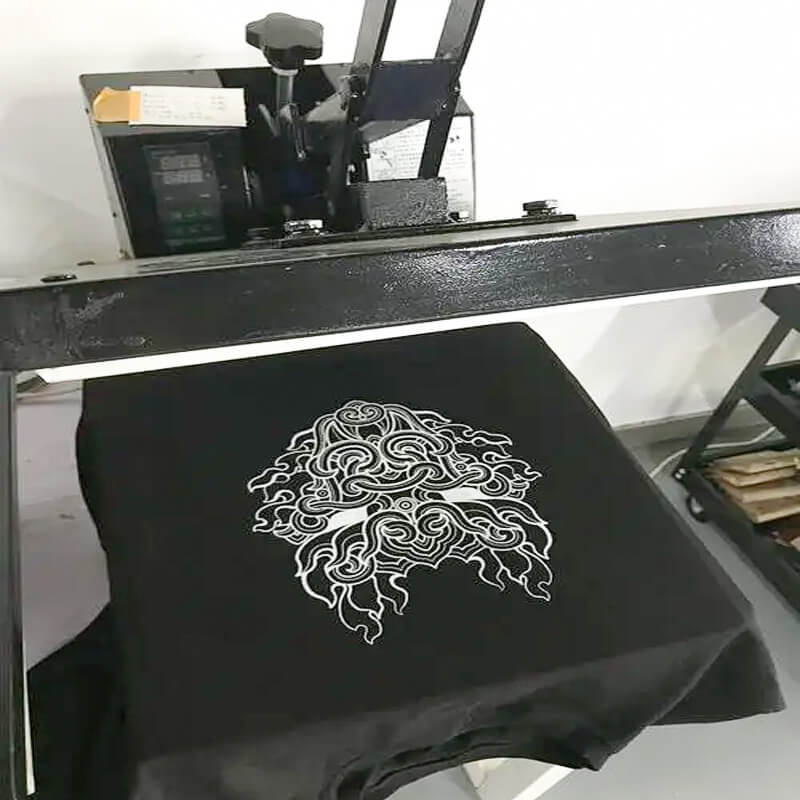
How Long Does it Take to Screen Print 100 Shirts?
- Setup: This initial phase requires about an hour, including screen preparation, design arrangement, ink mixing, and setting up the printing station.
- Printing per Shirt: The time taken varies with the design’s complexity. For instance, an experienced printer might finish a simple one-color design in under a minute, but complex multi-color designs can take several minutes.
- Drying/Curing: If utilizing an efficient drying tunnel, this won’t significantly impact active time. However, methods like air drying or limited-capacity equipment might extend the drying period.
- Cleanup: After printing, screens and equipment need cleaning, typically taking about 30 minutes.
Given these hypothetical average times:
- Setup Time: 1 hour
- Printing Time per Shirt: 2 minutes (though it can vary widely)
- Drying/Curing Time: Assuming a drying tunnel is used, this doesn’t add much to the active time. But without it, the drying time can be significant.
- Cleanup Time: 30 minutes
For 100 shirts, the total time can be calculated as:
Total Printing Time=Setup Time+(Printing Time per Shirt×100)+Cleanup Time
For a hypothetical scenario of 100 shirts with a 2-minute printing time each, the total process would be around 4 hours and 50 minutes. However, it’s crucial to understand these are average times and real-world scenarios might differ. For accurate timings, consulting with a screen printing expert is advised.
How long does it take to press a design on a shirt?
Transferring a design onto a shirt using a heat press involves several steps. including setting up the press. If you’re wondering What size heat press is best for shirts, it largely depends on your production needs and the designs you are working with.
Initially, there’s a setup time, which can take a few minutes. It includes preparing the design, positioning it on the shirt, and setting up the press. The actual pressing takes between 10 to 30 seconds for vinyl designs but can last up to a minute for other transfers. Some designs need to cool before removing the backing, adding another few seconds to a minute. Lastly, the cleanup process involves removing any carrier sheets and inspecting the design, which can take up to a minute.
Hypothetically, if setup takes 3 minutes, pressing 20 seconds, cooling 30 seconds, and cleaning 1 minute, the total time for one shirt would be about 4.83 minutes. However, this can vary based on transfer type, shirt material, and press specifics. For multiple shirts, setup time is distributed, reducing the time per shirt after the first.
Expedited Printing Options
Need to get your shirt printed quickly? Fortunately, there are options available such as rush orders and faster shipping that can make it possible for you! Read on to learn more about them.
Rush order options
If you’re in a time crunch and need your T-shirts printed quickly, rush orders are your best bet. Extra fees are typically involved, but the convenience may be well worth it. The turnaround time largely depends on the printing method you choose. Screen printing usually takes longer than Direct-to-government (DTG) or heat transfer methods. However, many businesses offer one-week delivery options for rush orders at an additional cost.
Some companies even provide same-day T-shirt printing services for those who can’t wait. If expedited shipping isn’t a viable option for you, you’ll be happy to know there are local printing partners who can deliver within 24 hours at no extra charge. So, when time is of the essence, you have plenty of options to get your custom shirts quickly.
Faster shipping options
If you’re looking for fast custom T-shirt orders, you have several options that beat the standard two-week turnaround. Printify, for instance, offers an Express Delivery service where you can have your shirts printed and delivered in just two working days for an extra fee.
Another avenue is to opt for a rush order fee with print-on-demand companies or courier selections on platforms like Amazon. Custom Ink provides a one-week rush delivery service, while SameDayCustoms even offers same-day custom printing. They give you the option for pickup or delivery in as fast as an hour without any additional charges.
For those looking to ship art prints swiftly, expedited shipping is a viable option. This usually takes 3-4 business days, although the time can vary based on location and the courier service chosen. Companies like UPrinting guarantee 48-hour accelerated shipping even during busy periods, thanks to their extensive production capabilities. So, whether you’re in a mild hurry or an extreme rush, there’s a fast shipping option for you.
How many shirts can I print in an hour?
If you’re an expert in screen printing, you can churn out 30 to 90 one-color shirts every hour. However, when it comes to multi-color designs, this rate drops to between 20 and 40 shirts per hour. Why? Well, multi-color designs require additional passes. Moving on to heat transfer and sublimation printing, these methods allow for a more modest 10 to 20 shirts per hour. The time varies based on the design and how long it takes to press the shirt.
Direct-to-garment (DTG) printing is another option. Here, you can expect to produce between 6 and 30 shirts per hour, depending on the complexity of your design. On the other hand, if you’re using vinyl cutting, the rate can range from 12 to 60 shirts per hour. But keep in mind, that the preparation time could affect your overall output.
It’s important to note that these are general figures. Several factors, such as the equipment you’re using, your level of expertise, and any unexpected issues, can influence these rates.
The Shirt Printing Process
Shirt printing encompasses various techniques and processes, each offering its own advantages and suited for different types of designs and quantities.
1. Screen Printing (Silk Screening):
- Process: Involves pushing ink through a mesh screen onto the shirt. Each color in the design requires a separate screen.
- Advantages: Durable and high-quality prints. Cost-effective for large quantities.
- Limitations: Setup can be time-consuming. Not cost-effective for small runs or designs with many colors.
- Recommended Supplies & Equipment: To get started with screen printing, it’s crucial to have the right supplies and equipment. Check out our comprehensive list of Screen Printing Supplies & Equipment to make sure you’re fully equipped.
2. Heat Transfer Printing:
- Process: Designs are printed onto transfer paper and then pressed onto the shirt using a heat press.
- Advantages: Suitable for small quantities and full-color photos. Quick turnaround.
- Limitations: The print may fade over time. The feel of the transfer can be different from direct-to-garment methods.
3. Direct-to-Garment (DTG) Printing:
- Process: Involves using a special printer to print ink directly onto the shirt, similar to a regular paper printer.
- Advantages: Can print highly detailed and full-color images. No setup fees. Ideal for small runs.
- Limitations: Not as cost-effective for large quantities. Print durability might be less than screen printing.
4. Sublimation Printing:
- Process: Uses heat to transfer dye onto materials. Only works on polyester or poly-coated materials and is generally used for full-shirt designs.
- Advantages: The print feels like part of the fabric. Allows for all-over and complex designs.
- Limitations: Limited to polyester materials, which may not be as comfortable as cotton. Colors might not be as vibrant on darker shirts.
5. Vinyl Cutting:
- Process: Designs are cut from vinyl sheets and then pressed onto the shirt using a heat press.
- Advantages: Produces a sharp, clear, and durable design. Ideal for single-color designs and names/numbers on sportswear.
- Limitations: Not suitable for designs with multiple colors or intricate details. The feel of the vinyl can be different from other methods.
Choosing the Right Process: The ideal printing method depends on the design, quantity, budget, and desired quality. For instance:
- Screen printing is great for bulk orders with limited colors.
- DTG is perfect for small runs with detailed, multi-colored designs.
- Vinyl cutting is ideal for sports jerseys and single-color designs.
- Sublimation is best for all-over prints on polyester shirts.
It’s essential to consult with a printing professional or company to determine the best method for a particular project.
Conclusion
In summary, shirt printing speed depends on factors like the item’s complexity, material, design size, and the printing method chosen. The number of colors and use of tools like jigs can also influence speed and cost. Different printing methods, such as screen printing and DTG, have unique timeframes and considerations. For urgent needs, many companies offer rush orders and faster shipping at extra fees. The hourly printing capacity varies based on the method, design complexity, and efficiency of the equipment and staff. It’s vital to consult with printing professionals for accurate project timelines.
FAQs
1. Why are printed T-shirts so expensive?
Costs stem from fabric quality, design complexity, printing method, branding, labor, and overhead expenses.
2. Is a t-shirt printing business worth it?
Yes, if approached with unique designs, effective marketing, cost-efficient production, and an understanding of market trends.
3. How much do t-shirts usually sell for?
Generic t-shirts: $10-$30. Branded/designer: $50 and up.
4. What’s better: heat press or screen printing?
A heat press is quick and ideal for small batches. Screen printing is durable and cost-effective for large orders. The choice depends on the project size and budget.






